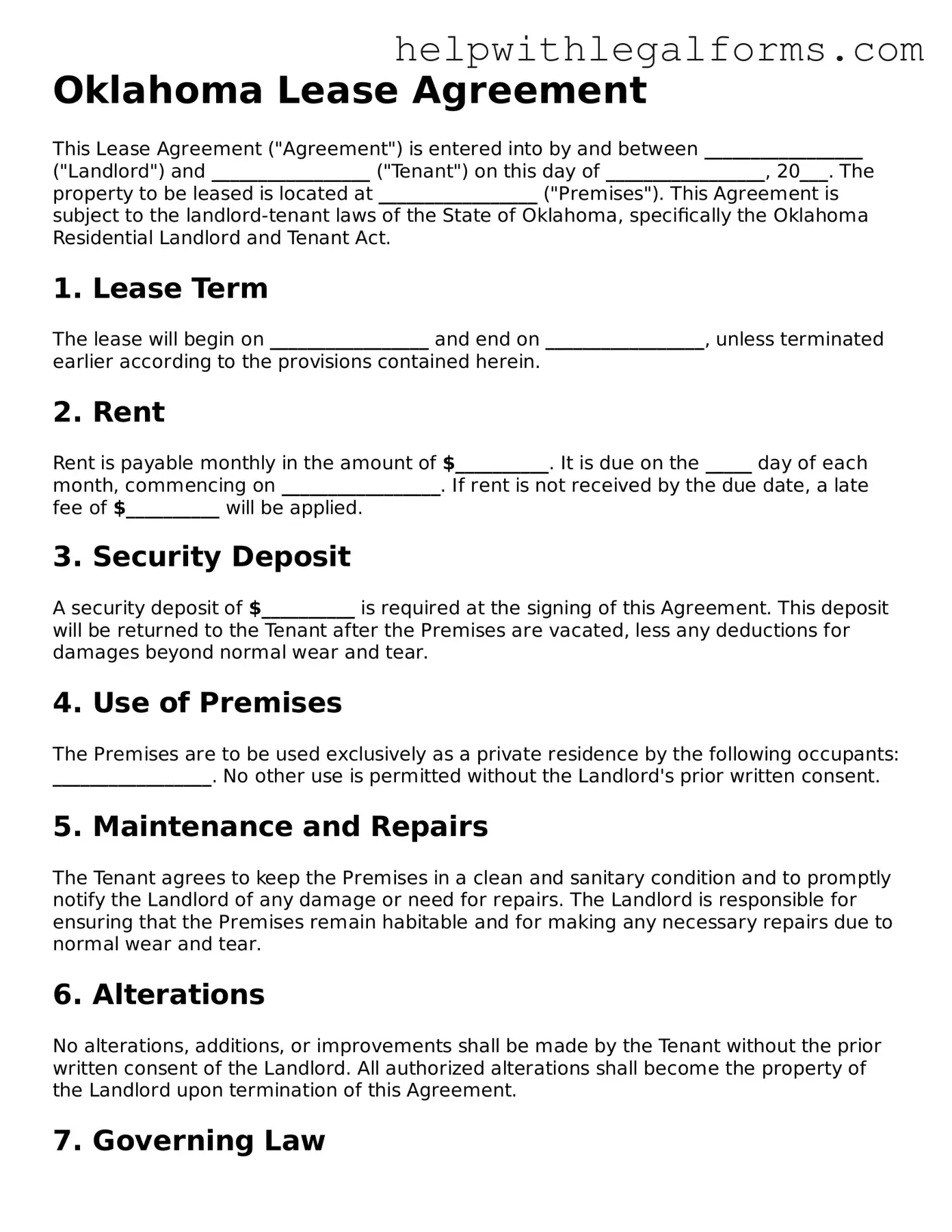What is an Oklahoma Lease Agreement?
An Oklahoma Lease Agreement is a legally binding document between a landlord and a tenant that outlines the terms and conditions for renting property in Oklahoma. It covers details such as rent amount, payment schedules, security deposits, and the rights and responsibilities of each party.
How long can a lease agreement be in Oklahoma?
The duration of a lease agreement in Oklahoma can vary. Typically, lease agreements are for one year; however, they can be structured for different lengths of time, including monthly (month-to-month lease agreements).
Is a written lease agreement required in Oklahoma?
While oral lease agreements are legally binding in Oklahoma for tenancies less than a year, it is highly recommended to have a written lease agreement for any rental situation. A written agreement provides clarity and prevents misunderstandings by detailing the terms and conditions of the lease.
What should be included in an Oklahoma Lease Agreement?
An Oklahoma Lease Agreement should include the property details, landlord and tenant information, rent amount and payment instructions, lease duration, security deposit details, policies on pets and subletting, maintenance responsibilities, and any other terms or conditions pertinent to the lease.
Can a landlord enter the property without permission in Oklahoma?
In Oklahoma, a landlord must provide the tenant reasonable notice before entering the property, typically 24 hours, unless it's an emergency or it's agreed upon differently in the lease. This is to respect the tenant's right to privacy while allowing the landlord to perform necessary maintenance or inspections.
How much notice is required to end a month-to-month lease in Oklahoma?
To terminate a month-to-month lease in Oklahoma, either the landlord or the tenant must provide at least 30 days' written notice before the desired end date of the tenancy. This notice should be given before the rent is due to effectively end the agreement after the forthcoming payment period.
What happens if a lease expires and no new lease is signed in Oklahoma?
If a lease expires and no new agreement is signed, the tenancy will typically transition to a month-to-month lease under the same terms and conditions as the original lease, as long as the tenant continues to pay rent and the landlord accepts the payment.
Are landlords required to return security deposits in Oklahoma?
Yes, in Oklahoma, landlords are required to return a tenant's security deposit within 45 days after the lease has ended and the tenant has vacated the property. If deductions are made for damages or unpaid rent, those must be itemized and sent with any remaining portion of the deposit.
Can a tenant withhold rent for repairs in Oklahoma?
In certain situations, Oklahoma tenants may have the right to withhold rent if the landlord fails to make crucial repairs that affect the health or safety of the tenant. It's important that the tenant follows specific legal procedures before withholding rent, such as providing written notice to the landlord outlining the issue and allowing adequate time for the repair.
What legal actions can a landlord take if a tenant breaches an Oklahoma Lease Agreement?
If a tenant breaches an Oklahoma Lease Agreement, the landlord may have the right to issue a notice to the tenant, demanding correction of the breach. If the tenant fails to address the breach within the time specified in the notice, the landlord can initiate legal proceedings to evict the tenant and may seek damages for any loss incurred due to the breach.
